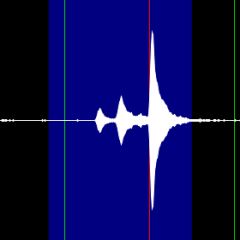Weird timegrapher results - Vostok 2414A
-
Similar Content
-
Recently Browsing
- No registered users viewing this page.
-
Topics
-
Posts
-
I need to see photos of the whole movement before I comment.
-
Hi @Jon, so, from one extreme to another the beat error is 0.1(min.pos) to 0.2(msx.pos), and as you mentioned the rate does up and down dramatically. Also checked the position of the collet, and the collet is not central to the jewel on the balance cock. Balance moves freely, per my understanding. So, after 24h the ampl. fell down by approx 20 deg, which I would assume is expected. After adjusting the endshake I believe I gained around +10 deg. of balance movement. Which is great, and overall the balance is not at 220'ish deg. What I did next, some might think is non-orthodox, but was wort a try. I too the mainspring out, checked again for endshake and if the pin moves freely, and cleaned everything. Usually when installing the mainspring I would use some barrel grease on the barrel walls, install the spring and put a 2-3 drops of D-5 oil on top of the wounded spring and in the places where the arbor sits. This time I took the spring and applied a ultra this coat of Molykote Dx paste on the whole spring, before installing it in to the barrel, and added some oil to the arbor as usual. The result improved, at a full wound the balance produces about 230-237 deg. @JohnR725 I'm getting closer to 300 😃 What I am noticing, there is a fluctuation in amplitude. With time it would rise and drop about total 8-10 deg in an interval about 2 minutes. I assumed this ruled out the power transfer from the barrel itself. So I took the gear train out, cleaned and lubed.
-
By Hawaiikook808 · Posted
Thank you so much, Hector and CJ. I appreciate the tech sheet and the video. Gasp, I think I will make the attempt. What's the worst that can happen? I think there may be a new balance complete in my future, though. I'll update the post and let you know the result. R, Frank -
So here is the new base (v 2.1), I made it so that the base will fit over and swallow the stump of the hand pusher tool (or at least my clone of the tool), I also reduced the OD of the bottom skirt a little as it looked/felt a little large, here are a few pictures and the fake .pdf file which you need to convert to .zip once downloaded. The cut-out seen on the below image on the bottom of the base should swallow the OD (40 mm, +0.1 mm tolerance) of the stump and the height of the stump 9.5mm (measured to 9.1mm, but rounded to 9.5mm) - let me know if this works for your tool. Note, I think you may need to print supports for the new internal shelf created? Here is the fake .pdf for just the FreeCAD base file and 3mf files Modular Movement Holder.pdf Here is the fake pdf for complete set of the new base and ring FreeCAD/3mf files: Modular Movement Holder base and ring v 2.1.pdf However, I'm wondering how often you could use this feature, adding the dial usually increases the OD of the movement, so you would need a new (larger) adapter ring tuned to the OD of the dial and I wouldn't like to grip the dial in any kind of movement holder if It could be avoided for fear of damaging it. Maybe I'm misunderstanding you?
-
By HectorLooi · Posted
Hi Frank, you have dived headlong into the deep end. Hairspring work has to be the scariest thing a newbie has to tackle. Your hairspring appears to be bent and just putting it back into the regulator would not allow the balance to work properly. It might start oscillating but the performance would not be good. The proper thing to do is to unstud the hairspring, remove the hairspring from the balance, reinstall the hairspring on the stud carrier, reshape the endcurve and centre the collet to the balance jewel hole. This challenge would either make you or break you. Hope that you will be able to fix your watch. Welcome to the world of watchmaking. Watch this video. It think it'll give you an idea of the task ahead. From your 1st photo, I think you have a etachron type stud. Let me see if I can find a video on how to remove it from the arm.
-










Recommended Posts
Join the conversation
You can post now and register later. If you have an account, sign in now to post with your account.
Note: Your post will require moderator approval before it will be visible.